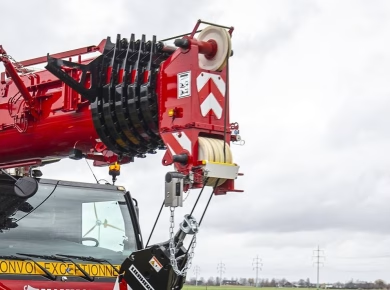As I stood on the construction site, the hum of machinery and the chatter of workers created a familiar backdrop to my daily inspections. Yet, today felt different. The sun was shining, and the scaffolding towered high, a complex structure designed to support not just materials but the very lives of the workers relying on it. A shiver ran down my spine as I recalled the stories of accidents that unfolded due to neglected scaffolding safety. It’s a sobering reminder that each inspection isn’t just a checklist; it’s a lifeline.
Understanding the Importance of Scaffolding Safety
Scaffolding safety is a critical aspect of construction that often gets overlooked until it’s too late. The statistics are alarming: according to OSHA, falls are the leading cause of death in the construction industry, and a significant number of these incidents involve scaffolding. These structures are designed to hold workers and materials at height, and if they are not inspected and maintained properly, the risks multiply.
When I first started in construction, I remember my mentor emphasizing the importance of rigorous inspections. He would say, “Treat every scaffold like it’s your own home.” This perspective shaped my approach to ensuring safety. Every inspection is an opportunity to catch potential hazards before they turn into accidents.
The Checklist: What to Look For
Conducting scaffold inspections involves a comprehensive checklist that covers various aspects, from structural integrity to compliance with safety regulations. Here are the key points that should never be overlooked:
– **Structural Stability**: Ensure that the scaffold is erected on stable ground and that all components are secured. Each leg should be resting on a solid foundation, and any uneven ground should be addressed with leveling devices.
– **Material Condition**: Inspect the materials for any signs of wear and tear. Look for rust, cracks, or missing parts. A damaged scaffold component can compromise the entire structure.
– **Guardrails and Toe Boards**: These are essential for preventing falls. Make sure they are installed correctly and are in good condition. It’s often the small details that save lives.
– **Access and Egress**: Workers need to safely access the work area. Ensure ladders and stairways are secure and free of obstructions. An easy access point contributes significantly to safety.
– **Weather Considerations**: Weather can dramatically affect scaffolding safety. Rain, wind, or snow can lead to slippery surfaces or decreased stability. Be especially vigilant after inclement weather.
Common Challenges in Scaffold Safety Inspections
Despite having a checklist, challenges frequently arise during scaffold inspections. One of the most significant hurdles is communication on-site. Often, workers may overlook issues simply because they don’t feel comfortable voicing their concerns.
Creating a culture that encourages open communication is crucial. I’ve found that holding regular safety briefings where workers can express their observations fosters a more vigilant workforce. When people feel empowered to speak up, it leads to a more proactive approach to safety.
Another challenge is the fast-paced nature of construction. Time is money, and sometimes inspections can feel like a hindrance. However, taking shortcuts during inspections can have devastating consequences. Each inspection should be thorough, regardless of time constraints.
Training and Compliance
Training is another vital component of scaffolding safety. All workers should receive proper training on how to erect and inspect scaffolding. In my experience, the more knowledgeable the crew is about safety protocols, the fewer accidents occur. Compliance with local and national regulations is non-negotiable.
Regular training sessions not only keep safety at the forefront but also help in identifying trends or recurring issues. For example, if multiple workers report difficulty accessing a scaffold due to improper ladder placement, it may indicate a need for additional training on proper setup.
Real-World Consequences of Neglected Scaffold Safety
Reflecting on past projects, I can recall instances where negligence led to severe accidents. One particular incident involved a worker who fell from a scaffold that had not been inspected for weeks. The aftermath was devastating—not just for the injured worker but also for the entire crew.
The incident served as a wake-up call. It highlighted the need for consistent inspections and the importance of accountability. After that event, we instituted a mandatory daily inspection routine, which included a quick but thorough checklist review before work commenced. The changes made a tangible difference in our safety record.
Leveraging Technology for Enhanced Safety
In today’s world, technology can be a powerful ally in scaffolding safety. Various apps and inspection software allow for real-time reporting and tracking of scaffolding conditions. Implementing these tools can streamline the inspection process and improve compliance.
Using technology can also aid in training. Virtual reality (VR) training modules are becoming more common, providing workers with immersive experiences that teach them how to properly inspect and maintain scaffolding. This modern approach can enhance retention and understanding of safety protocols.
Conclusion: Making Safety a Priority
As I wrap up my day and reflect on the role of scaffolding safety in construction, it’s clear that the stakes are high. The responsibility of ensuring safety lies with all of us, from site managers to laborers. Each inspection is a critical step in preventing accidents and fostering a culture of safety on the job site.
Emphasizing the importance of thorough inspections and encouraging open communication can lead to a safer environment for everyone involved. Let’s not wait for accidents to occur before taking action; instead, let’s prioritize scaffolding safety as an integral part of our daily routine. Remember, when it comes to safety, the cost of neglect is far greater than the investment in diligence.


